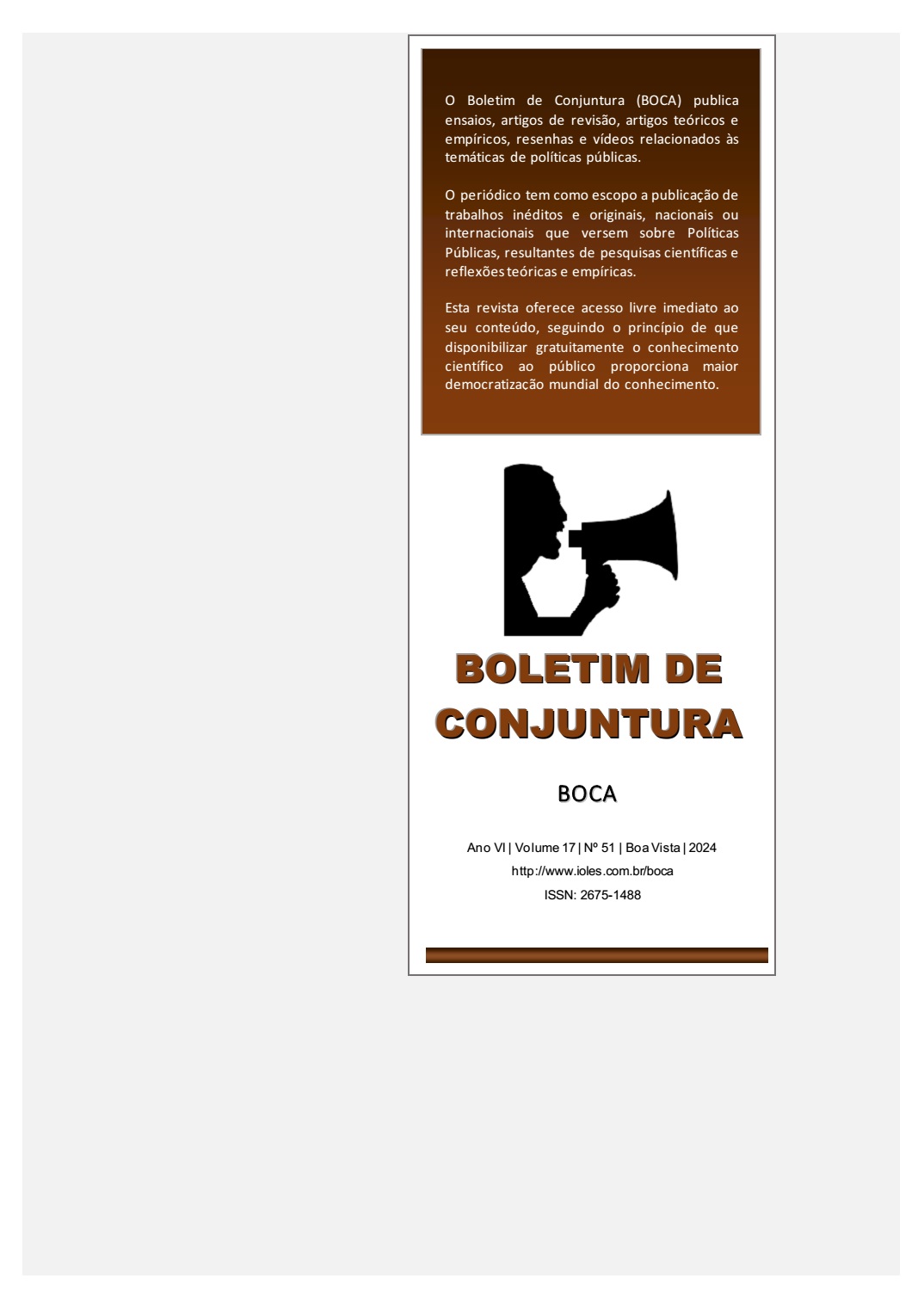DESAFIOS E ESTRATÉGIAS NO MONITORAMENTO DE MUNIÇÕES: UMA ANÁLISE COMPARATIVA BRASIL-EUA
##plugins.themes.bootstrap3.article.main##
Resumo
Este estudo compara os métodos de monitoramento de munições do Exército Brasileiro (EB) e do Exército dos Estados Unidos (USA – United States Army), a fim de identificar oportunidades de melhoria no modo como são geridos os estoques desses materiais no Brasil. A pesquisa se concentra em detalhar as características básicas das atividades de inspeção, provas de funcionamento e exames laboratoriais dos referidos sistemas de gestão, utilizando os critérios de flexibilidade e economicidade como parâmetros principais de comparação. Os achados revelam que a abordagem mais flexível empregada pelos EUA na condução dessas atividades contribui para a maior eficiência e sustentabilidade de seus estoques, contrastando com a metodologia mais tradicional adotada pelo EB. Ao final, conclui-se pela integração de métodos complementares de análise, pelo uso de sistemas móveis para testes em campo e pela atualização das diretrizes regulatórias nacionais, a fim de promover maior segurança e melhor economia na gestão das munições do EB.
##plugins.themes.bootstrap3.article.details##

Este trabalho está licenciado sob uma licença Creative Commons Attribution 4.0 International License.
Direitos autorais (c) . 
Esta obra está licenciada sob uma licença Creative Commons Atribuição 4.0 Internacional.
Referências
ALENCAR, T. M. A gestão de suprimento classe V (Munição) no Exército Brasileiro adequada ao tempo de paz (Tese de Doutorado em Ciências Militares). Rio de Janeiro: ECEME, 2014.
BOBIC, N. et al. “The influence of migration processes in gunpowder charge on the quality of mortar ammunition”. Hemijska Industrija, vol. 71, n. 3, 2017.
BOHN, M. A. “Prediction of In-Service Time Period of Three Differently Stabilized Single Base Propellants”. Propellants, Explosives, Pyrotechnics, vol. 34, n. 3, 2009.
BOHN, M. A. “Prediction of Life Times of Propellants - improved kinetic description of the stabilizer consumption”. Propellants, Explosives, Pyrotechnics, vol. 19, n. 5, 1994.
DEFANTI, B. F. S.; MENDONÇA-FILHO, L. G.; NICHELE, J. “Effect of ageing on the combustion of single base propellants”. Combustion and Flame, vol. 221, 2020.
DRUET, L.; ASSELIN, M. “A review of stability test methods for gun and mortar propellants, II: Stability testing and surveillance”. Journal of Energetic Materials, vol. 6, 1988.
EXÉRCITO BRASILEIRO. Manual T9-1903: Armazenamento, manutenção, transporte, provas e exames e destruição de munições, explosivos e artifícios. Brasília: Exercíto Brasileiro, 1981.
EXÉRCITO BRASILEIRO. NEB/T M-255: Propelente a base de nitrocelulose determinação de estabilidade química por microcalorimetria. Brasília: Exercíto Brasileiro, 2007.
FAGUNDES, F. C. R. Políticas de Segurança e Defesa nas Fronteiras Internacionais do Brasil. Boa Vista: Editora da UFRR, 2019.
GRAVES, E. M. “Field-Portable Propellant Stability Test Equipment”. Army Logistician, vol. 40, n. 4, 2008.
NATO - North Atlantic Treaty Organization. AOP-46: The scientific basis for the whole life assessment of munitions. Brussels: NATO Standardization Agency, 2006.
NATO - North Atlantic Treaty Organization. AOP-48: Explosives, nitrocellulose-based propellants, stability test procedures and requirements using stabilizer depletion. Brussels: NATO Standardization Agency, 2008.
NATO - North Atlantic Treaty Organization. AOP-62: In-service surveillance of munitions general guidance. Brussels: NATO Standardization Office, 2017a.
NATO - North Atlantic Treaty Organization. AOP-63: In-service surveillance of munitions sampling and test procedures. Brussels: NATO Standardization Office, 2017b.
NATO - North Atlantic Treaty Organization. AOP-64: In-service surveillance of munitions condition monitoring of energetic materials. Brussels: NATO Standardization Office, 2017c.
SILVA, E. A. C. Geopolítica da Segurança Internacional: A Ótica das Organizações de Cooperação em Defesa. Boa Vista: Editora IOLEs, 2024.
TEIXEIRA, F. P. et al. “Effect of relative humidity and absorbed water on the ethyl centralite consumption in nitrocellulose-based propellants”. Cellulose, vol. 30, n. 3, 2023.
TRACHE, D.; TARCHOUN, A. F. “Analytical Methods for Stability Assessment of Nitrate Esters-Based Propellants”. Critical reviews in analytical chemistry, vol. 49, n. 5, 2019.
U.S. ARMY DEFENSE AMMUNITION CENTER. Propellant management guide. Rock Island: Defense Ammunition Center, 1998.
U.S. DEPARTMENT OF THE ARMY. Ammunition Stockpile Reliability Program. Washington: Department of the Army, 2016a.
U.S. DEPARTMENT OF THE ARMY. Ammunition surveillance procedures. Washington: Department of the Army, 2016b.
U.S. DEPARTMENT OF THE ARMY. The Army Ammunition Management System. Washington: Department of the Army, 2017.
U.S. WAR DEPARTMENT. TM 9-1904 - Ammunition Inspection Guide. Washington: War Department, 1944.
UNITED NATIONS. Critical Path Guide to the International Ammunition technical Guidelines, 2019.
UNITED NATIONS. Glossary of terms, definitions and abbreviations. New York: Unted Nations, 2021a.
UNITED NATIONS. Inspection of ammunition. New York: Unted Nations, 2021b.
UNITED NATIONS. Inventory management. New York: Unted Nations, 2021.
UNITED NATIONS. Surveillance and in-service proof. New York: Unted Nations, 2021c.
URBANSKI, T. Chemistry and Technology of Explosives. Oxford: Pergamon Press, 1965.
VOGELSANGER, B. “Chemical Stability, Compatibility and Shelf Life of Explosives”. CHIMIA International Journal for Chemistry, vol. 58, n. 6, 2004.
WEI, X. F.; LINDE, E.; HEDENQVIST, M. S. “Plasticiser loss from plastic or rubber products through diffusion and evaporation”. NPJ Materials Degradation, vol. 3, n. 1, 2019.


